
Roman Catholic Section 1 Row 2 Plot 26 and 27
George Fagan’s father Peter Fagan (born 1793, died 1876 aged 83 years) was one of the early residents and pioneers of the district. Peter Fagan arrived in the area in about 1836. Peter Fagan had financial interests, timber getting and property interests in Sydney.
George was the eighth of Peter Fagan’s nine children. Peter Fagan had the mail contract for the mail from Sydney to Gosford and also Kincumber with George being the rider who picked up the mail. George married Agnes Baptist in 1885 and Agnes is buried in the plot next to George. Also contained in this plot is there married Daughter, Edith Compton, (nee Fagan).
The Fagan family did well over time with the exception of the following disaster to which most families would want the following episode expunged from the history books.
9th December 1865,
(from the Sydney Morning Herald, page 3)
LOCAL AND COLONIAL INTELLIGENCE.
Mournful Occurrence Three Women Poisoned at Brisbane Water;
And two others persons not expected to survive – Intelligence of a most distressing disaster reached Sydney on Thursday, to the effect that three women Miss Gilligan, Mrs Fagan, and Miss Margaret Fagan died at Gosford, Brisbane Water, on Wednesday, as the result of their having taken poison. – It is also stated, that another daughter and a son of Mr and Mrs Fagan are likewise suffering from the effects of poison, and that no hope is to be entertained of their recovery.
The particulars’ relating to the cause of this dreadful catastrophe have not as yet been definitely ascertained but, – it is understood there is some reason to suppose that it is the result of accident. It is considered probable that a quantity of strychnine used on the station for poisoning native dogs had, by some mischance, become mixed with the, flour, and that thus, in the form of bread or of, pastry, it has been consumed by the deceased. However this may be the facts of .this painful incident will, no doubt be disclosed at the investigation, which will, have to take place before the Coroner’s court.
It may be mentioned that Mr Fagan, in riding from Brisbane Water to fetch a doctor was thrown from his horse, arid his arm was broken. Miss Gilligan and Mrs Fagan were the sisters of Mr Michael and Mr Edward Gilligan, butchers, carrying on business in George Street, near the Haymarket, and the former went on a visit to her sister (Mrs Fagan) about a fortnight ago.
Coffins were dispatched yesterday in which to bring up the remains of the deceased, and arrangements have been made with Mr Manning for one of the Illawarra Steam Navigation Company’s vessels to call in at Brisbane Water this morning, The bodies when brought to Sydney, will be conveyed to the church to St. Joseph (within St Mary’s Cathedral). The family to which the deceased all belonged have long been resident in Sydney, and it is believed are widely known and respected. The news of their terrible bereavement will awaken the sincerest sympathy with the relatives of the deceased, and all must deeply deplore the untimely death of the unfortunate sufferers.
The following are the sworn statements from the Coronial enquiry, you will note that the paper got some of the first reports totally incorrect.

Inquiry held at Cooranbean near Gosford on view of the bodies of Mrs Margaret Fagan, Bridget Gilligan and Margaret Fagan there lying dead on the 6th 7th 8th days of December 1865.
Peter Fagan on oath States I am a Farmer and reside a Cooranbean, Brisbane Waters this morning the deceased Bridget Gilligan sister of my wife who had been staying here for the last 14 days for the benefit of her health, said to me that she did not feel very well and that she would like a glass of wine and quinine if i would mix it for her.
I went and got the quinine bottle as i then thought and brought it with a bottle of port wine into the sitting room where my wife was. I then gave the deceased Bridget a small dose which she drank. After which my daughter said she would have some, I mixed another dose for her which she drank, she said it was very bitter and nasty, at which we all laughed and my son Joseph said he would take some too, and I gave him some. But I don’t think that he got as much as the other two. My wife the deceased Margaret Fagan, then asked to have some also and i put some more into the glass, she then said you must take a little with us and i said I would but as the wine was nearly done remarked that I would try how it tasted in a nobbler of rum and then I put some into the glass but not so much as the others had.
My Daughter Mary got a glass as well as the rest, but did not take so much after we had our doses I got upon my horse to go as far as Town which is about one and a half miles from my place. When i went to get off the horse I found that I had no use of my limbs and felt quite faint I was afraid that i was going to have a fit and went into Crause’s Public where I spoke to John Smith a butcher living in Gosford, he advised me to try some hot grog and i went and got a hot nobbler of brandy and water. I then went up to the Post Office and spoke to Mr Battley still feeling ill.
I got upon my horse to ride home when I got as far as the Punt, (there was no bridge at Narrara Creek at this stage) I met one of my men on horseback who told me that they were all dying and that he was going for the Priest and that I was to go for the Doctor. I told him that I lost the use of my limbs and could not move. I endeavoured to reach home as quick as I could but when I was getting out of the Punt I fell and put my shoulder out joint and had great difficulty reaching home and when I did I found that my wife Margaret Fagan and her sister Bridget Gilligan and my daughter Margaret Fagan were dead and that my son Joseph and daughter Mary were in a dying state.
I feel satisfied that i must have taken the wrong bottle and gave them Strychnine by mistake i kept the medicines in a box and had the strychnine along with the rest. I was aware that the bottle containing the Quinine was a different shape from the one that had the strychnine in it but it was so long since I had used them that I forgot which was in which. Before I gave the mixture I put it to my lips and tasted it and it seemed all right being quite bitter.
I have often given Quinine when they were ill and used it greatly for ague. I have had the strychnine in the house for above nine years there was no direction on either of the bottles.
I made the mistake where I said Bridget Gilligan had the first glass it was my daughter Margaret who first got it, and i did not give her so much as the others.
My wife and I drank out of the same glass. I drank first and only took a little while my wife finished the glass.
I did not think that I had given anyone a dose of quinine for the last four years, neither have I used the strychnine for that time. i got the strychnine for the purpose of destroying the native dogs and have poisoned numbers of them. I am now very ill and owing to my shoulder being out cannot sign this deposition.
Signed with an X, dated 7th December 1865
William Fagan on oath states I am the sixth son of Peter Fagan and reside at Cooranbean. Yesterday I was at work driving bullocks across the creek, my brother Joseph who was behind me called out to me that he was ill, and when I went up to him he was lying on the ground. I asked him what was the matter and he told father had given him something out of a bottle and that he did not think father knew what it was. he complained of cramps all over his body which he seemed to take in starts. I assisted him upon his horse and brought him as far as the punt. Where his brother Michael brought the Punt over and took him home. Whilst we were near the Punt our servant Richard Houston came down and said that mother was ill upon which I ran home and the first thing I saw – my Aunt Bridget Gilligan lying dead on the floor and my mother dead in the verandah – also my sister the deceased Margaret Fagan was also lying in the verandah and my sister Mary along with her- they were both alive and the deceased Margaret Fagan complained of great pain and asked me to let her lie easy I was then holding her in my arms, she had her eyes closed and could scarcely speak , as I had heard that they had taken poison, i got some whites of egg and forced it into her mouth, when I was giving it to her she said don’t but after swallowing it she asked for more and then vomited. She then asked for a drink of water and i gave her some in a cup with a little brandy in it. After drinking it my brother Charles took care of her and I went to my sister.
My sister Mary was not so bad she was able to speak and said she must have taken strychnine, my brother Joseph had told me the names of all of those who had taken the mixture from father
I then went for the Doctor and on my return found that my sister Margaret was dead. On my way for the Doctor I met father coming home and told him mother was dead he began to cry and said something but I could not tell what it was, being in such a state of excitement he told me that his shoulder was out and I helped him for about 20 yards on the road home.
My Father mother and all of us lived happily and quietly together. I heard my father speaking about quinine a few days previous and my aunt and all of them said it was good for some complaints.
Sworn on the 7th December 1865, William Fagan.

The above picture is of Joseseph Fagan standing next to the Henry Kendall Rock.
Joseph Fagan on oath states i am the youngest son of Peter Fagan and reside at Cooranbean, yesterday about 12 at noon , i rode u p from the Punt and asked father if he was ready ti go to town, as i would put him across he was then in the sitting room and had a small bottle in his hand. My sister Margaret one of the deceased had complained of a pain in her head and father said he would give her some wine and quinine which would do her good and he mixed some powder in wine which she drank after which mother said I had better have some also. So father gave her some in a glass after which the deceased Bridget Gilligan had a glass then my sister Mary after which father mixed some more in a glass of rum part of which he drank and the deceased Margret Fagan my mother finished what was left in the glass. a few minutes later father and i got upon our horses and after a going across the punt father rode in the direction of town and I continued on the road to the sawyers pit all at once I felt quite giddy and then fell down feeling very ill I managed to coo ee to my brother William heard it and came to me he got me upon my horse and brought me home when I saw mother lying dead and heard my sister and aunt were dying I then became insensible and know nothing more that took place.
My father kept medicines locked up in a box I would know the bottle that father had in his hand of the two bottles now produced I recognise the round one as that out of which father took the powder.
After I had drank my glass I noticed a good deal of sediment left in the bottom of the glass.
My sister Mary did not finish all she had in her glass I heard my mother ask father if he was sure he had the right bottle and he then asked me if it tasted bitter which i said it did when he said it was all right. My sister Margaret had taken her glass before I had come in it was my aunt that was taking it when i came in. Father did not press any of us to take the medicine.
Father, mother and all of us have lived happily together.
Sworn 7th December 1865 Joseph Fagan
Robert Thomas auld of Sarahville having been duly sworn, I am a qualified medical practitioner of NSW Medical board, I was called to see a Family who were said to be poisoned, I found Mrs Fagan, Bridget Gilligan and Margaret Fagan lying dead – on examination they presented a rigid appearance presenting to all appearance a very sudden death arising as if it were from poison, the jaws and bodies were quite stiff and rigid more than that of a deceased body under other circumstances.
I then saw Mary Fagan and Joseph Fagan reaching and vomiting violently complaining of general spasms and twitching in different parts of the body.
I then saw Peter Fagan the father who complained of merely squeamishness with similar spasmodic twitches but in a much slighter degree. He had also suffered a dislocation of the right shoulder.
Two bottles were handed to me which i now produce, one containing about 6 grains of strychnine and the other about 12 grains of quinine, from what Peter Fagan informed I should say he had given nearly or about 6 grains amongst the whole.
It is my opinion that the deaths occurred as a result and effects of the poison.
I have no experience of poisoning by strychnine but the suddenness of the deaths from what I have related and from the contents of the bottle, death has been the result. When the bottles were handed to me there were no labels upon them and i now hand them over to the Sergeant of Police in the same state I got them.
In colour and taste they much resemble each other and might be easily mistaken by an ignorant or careless person. The strychnine in the bottle is partly in crystals and partly in powder.
Sworn 7th December 1865, R. T. Auld.
The inquiry was adjourned for the day as Charles Fagan was not sufficiently calm and collected to give evidence.
Richard Houston on oath, states that i am a servant of Peter Fagan and reside at Cooranbean. Yesterday i was at work outside when I heard the deceased Mrs Fagan calling for me when I came she told me to go for her son Charles as she was very ill. I at once went to the creek where he was at work and told him to come home and got there before me.
I should say I was about an hour before I got back and when I did Mrs Fagan was dead.
8th December 1865 Richard Houston.
Charles Fagan on Oath states I am the eldest son of Peter Fagan and reside at Cooranbean. Last Wednesday about 11 a.m. I was at work on the other side of the creek about half a mile from home when I heard our servant Richard Houston calling me and he told me Mrs Fagan had sent him for me, as my sister had fallen down and had the cramp badly.
I put my horse into the punt and galloped home, where the first person I saw was my aunt, the deceased Bridget Gilligan, lying on the floor in great agony. I next saw my mother the deceased Margaret Fagan lying dead on the verandah and my sister the deceased Margaret Fagan almost dead in the same place.
My sister Mary close to her my brother Peter then came to me I asked my Aunt what could I do for her and she asked me to lift her head which I did. My sister Mary told me that they had taken poison, having strychnine in place of Quinine which father had mixed up for them.
My brother Peter then gave our sister Mary some egg whites and i tried to do the same to my sister Margaret but she could not swallow it and asked me to hold her in my arms, I did so and in a few moments she died.
My brother William had started for the punt and the Doctor but before the doctor arrived they were all gone. That is Mother, aunt and sister, after I has raised my aunts head I ran into the verandah an on my return she was dead.
I know that my father kept medicines in a box and also that he had strychnine. A few days back my sister complained of being unwell and my father said that a little quinine would be good for her.
I heard my sister Margaret say in the morning that she had not been able to sleep all night
Father mother and all of us lived happily together.
Sworn 8th December 1865 Charles Fagan
I find that the deceased Mrs Margaret Fagan aged 50, Bridget Gilligan Aged 38, and Margaret Fagan aged 24, died from the effects of strychnine poisoning accidentally administered to them instead of quinine by Peter Fagan of Cooranbean. Signed Boyd Horsburgh J.P.
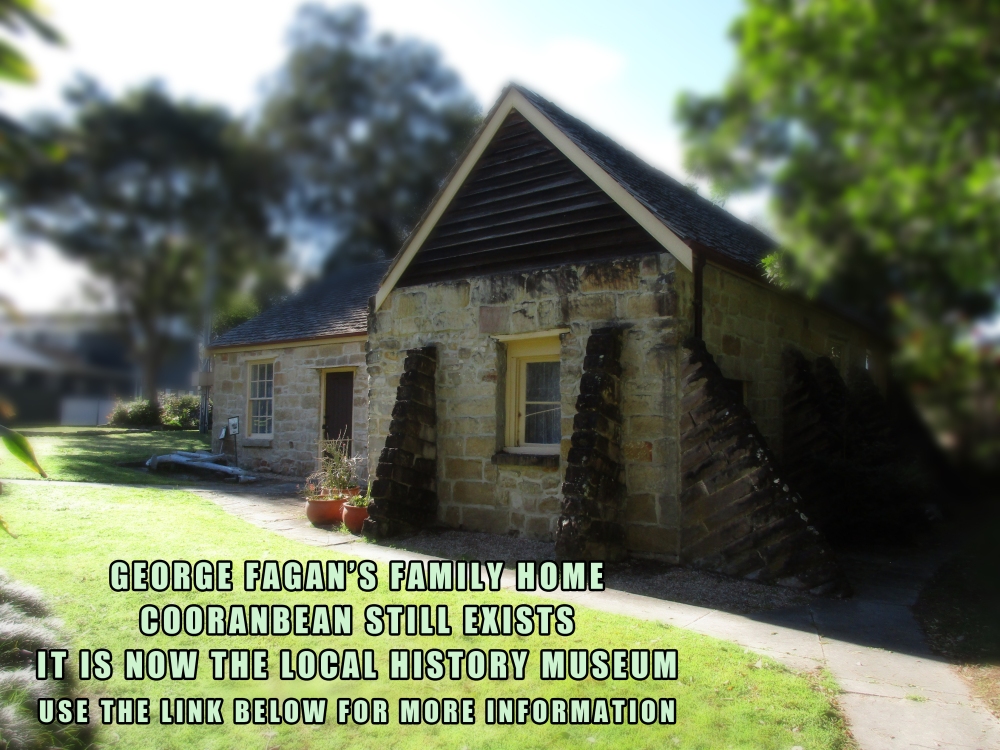
Sydney Morning Herald
9th December 1865
DEATHS.
GILLIGAN-FAGAN.-On the 6th instant, at Gosford, Brisbane Water, Bridget Frances Gilligan, the beloved sister of Michael Edward Gilligan, of George-street, Haymarket.
Also, at same place, Margaret, the beloved wife of Peter Fagan, of Gosford, and sister of Michael and Edward Gilligan, of Haymarket, Sydney. Also, at same place, Margaret Terese, the beloved daughter of Peter and Margaret Fagan, and niece of Messrs. M. and E. Gilligan, Haymarket.

21st February, 1924
Death of Mr. G. L. Fagan.
We regret to announce the death of Mr. George Lamb Fagan, which took place at his residence, ‘Oak Haven,’ West Gosford, on Friday last, at the age of 85 years. The deceased gentle man was a member of the Fagan family settled in Brisbane Water in 1836, and he ‘was born at the Old Farm (Point Clare) in 1838.
The family moved to Coorambene Creek a few years later. The Old Farm was known in the early days as ‘Willy Willy,’ so called by the blacks who at that time existed in great numbers. Mr. Fagan, senior., had the mail contract between Gosford and Sydney (and in later years to Kincumber), and as a youth, George had the job on the Sydney side of the Hawkesbury River, and when the mail was brought –across Peat’s Ferry his brother Joe brought it over the ridges to Gosford. Even as a boy, George Fagan had a passion for racehorses, and many a winner he rode in the days of Victoria Park.
In later years he became an owner on the Metropolitan courses, and his first mare of note was Mabel, who won many races and was the idol of the stable boy, Teddy Keys, who later on blossomed out as a trainer, and is the same Teddy Keys that racing people know so well to-day.
Mabel ‘s best race was that in which she won the Mayor ‘s Cup at Randwick in the days when C. J. Roberts was Mayor of Sydney, and the prize of £300 and the Cup (which is at ‘Oak Haven’) was considered an extra big race at the time.
Mr. Fagan owned another mare of which he was very proud, named Phyllis, and she won a great number of races. She was backed by the stable to win five thousand in the Hawkesbury Autumn Handicap at Clarendon, and had the race well won when the boy began to pull her up, and something came with a late run; before the boy could get Phyllis going again they passed the post, and the five thousand was lost by a head. Mr. Fagan was a member of the firm of Fagan Bros., who had timber mills at Camden, Haven, and a wharf at Market Street, in Sydney, where they carried on business as timber merchants for many years.
Tie was married to Miss Agnes Baptist in 1885, and his widow and one daughter (Mrs. Frank Compton, of Gosford), survive him. He was a great admirer and ardent friend of Henry Kendall, and is one of those whose initials are cut on the famous Kendall ‘s Rock, near Coorambene, mentioned in the immortal poem, ‘Names Upon a Stone.’

Mr. Fagan continued his racing right to the end and his horses, Teo and Icango, were well known at local meetings. He was very largely interested in Ascot Racecourse, and had many investments in the Metropolis.
He loved his home by Sweet Narara Creek, and often the writer had a chat with him about the days of Kendall and the shingle splitters. Of the fine old family of Fagans, known to all the pioneering families of Brisbane Water, only our much respected Joseph (The Colonel) remains, and to him, and to Mrs. Fagan and Mr. and Mrs. Compton we extend our hearty sympathy in their bereavement. The funeral took place at Point Clare Cemetery on Saturday and the remains of George Lamb Fagan lie between the home in which he was born ‘Willy Willy,’ and that in which he was reared, Coorambene,’ and he is within half a mile of Kendall’s Rock on the west, and his beloved Narara Creek on the east; and only a little distance from ‘Coorambene’ Creek. We who knew him best reverently say:
‘May the turf rest lightly on him. ‘
The Rev. Father Donovan officiated at the graveside, and Mr. R. H. Creighton carried, out the mortuary arrangements in his usual dignified and reverent manner.

13th May 1926
‘NAMES UPON A STONE.’
Thus a Sydney daily paper: —
What lover of the poetry of Henry Kendall does not know his charming poem, ‘Names Upon a Stone,’ written when he was living with his friend, George Fagan, in a delightful nook on Coorumbine Creek, near Gosford?
But probably very few of Kendall’s devotees know that the stone which literally formed the basis for the poem is to be seen still — standing in quiet majesty above the ‘many fluted frills of the creek, and canopied by the whispering trees that stand as they stood when the poet lingered there, with ‘a beauty like the light of song’ in his thoughts.
‘H.K.; G.F.; X, 74’ (October., 1874) — these initials and figures were carved deeply into the rugged sandstone boulder, and, though moss grown, -are almost as plain as they were when the poet carved them over …fifty years ago.
What a place for a pilgrimage to Kendall ‘s memory! Alas, the vandals have been there. Although the stone is on the property of the Jusfrute Company, the managing director of which (Captain Adcock) does – his best to safeguard the hallowed spot, casual visitors have found it out- and x chipped their nondescript names above, below, and all about the famous inscription. This on picturesque old stone that ought to be regarded as a national treasure.

15th March 1928
Top of Form
Death of Mrs. Fagan
News to-day of the sudden decease of Mrs. Agnes I. Fagan, a well-known and highly respected resident of West Gosford, came as a great shock among her large circle of friends,:- Deceased was a fine old lady who had passed the allotted span; she died in the early hours of this (Thursday) morning, at the ripe age of 83. After a short illness, Mrs. Fagan had entered St. Vincent’s Private Hospital, Sydney, three weeks ago, intending to rest, when a further and more serious illness overtook her, and proved fatal. Deceased had been a resident of Gosford for the past 15 years, and lived on the banks of Narara Creek in a fine house near Fagan ‘s Bridge, with her husband, the late George Fagan, who predeceased her three years ago. She was born in Sydney, and was a daughter of the late Thomas Baptist, and was perhaps one of the oldest living native-born citizens of New South Wales. Mrs. Fagan was widely known for her philanthropic works, and was a willing helper of anyone in need. She leaves a daughter and son-in-law (Mr. and Mrs. Frank Compton, of West Gosford), two sisters, one (Miss Baptist, of Sydney), aged 81, and the other (a resident of Mosman), aged 94; and one grandchild. The interment takes place at noon to-morrow (Friday), in the Roman Catholic portion of Pt. Clare Cemetery.



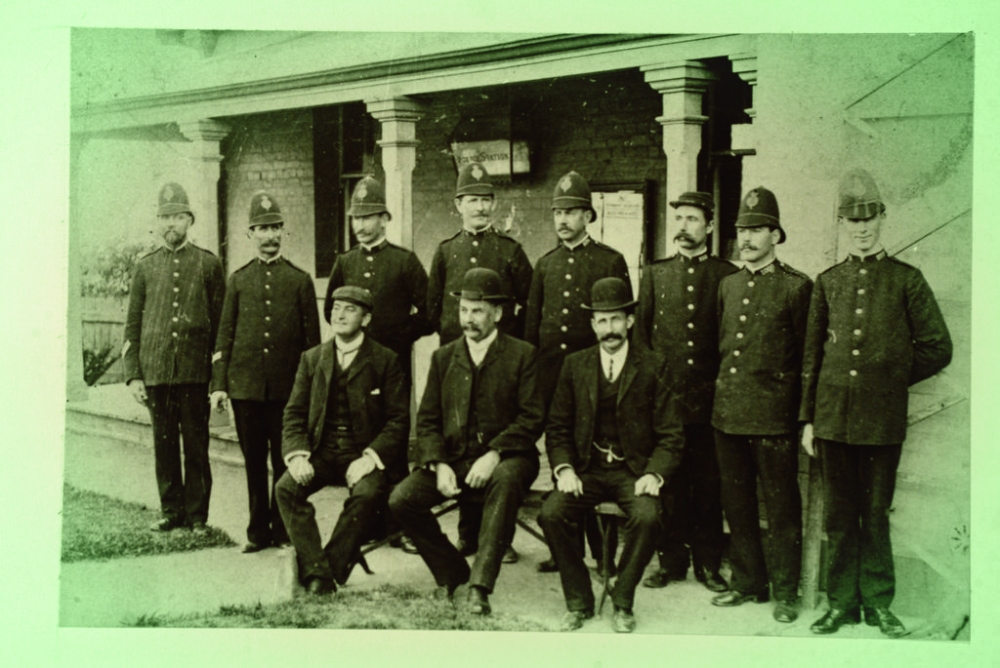












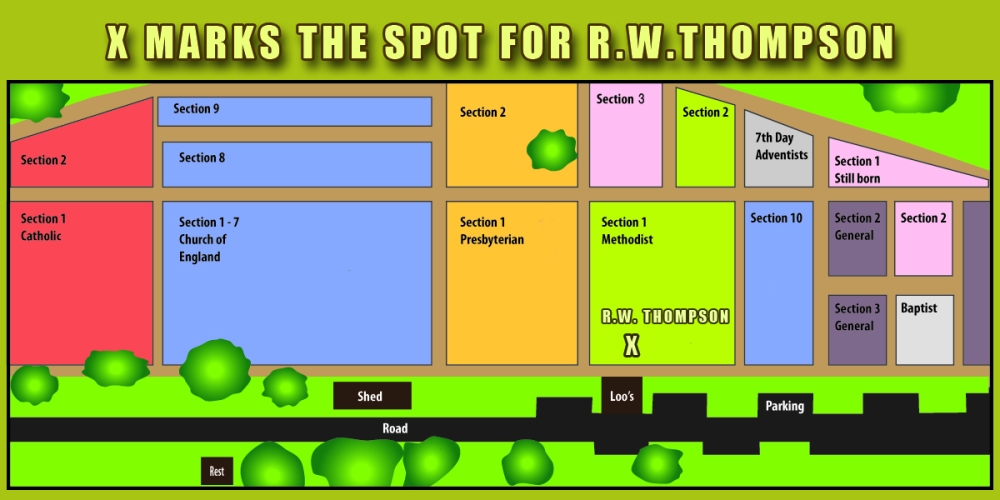


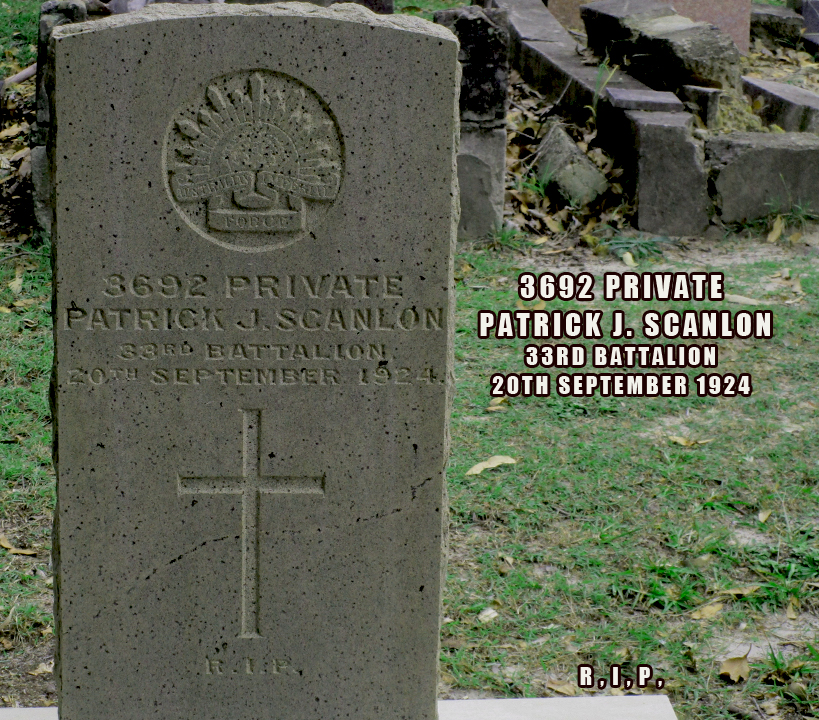
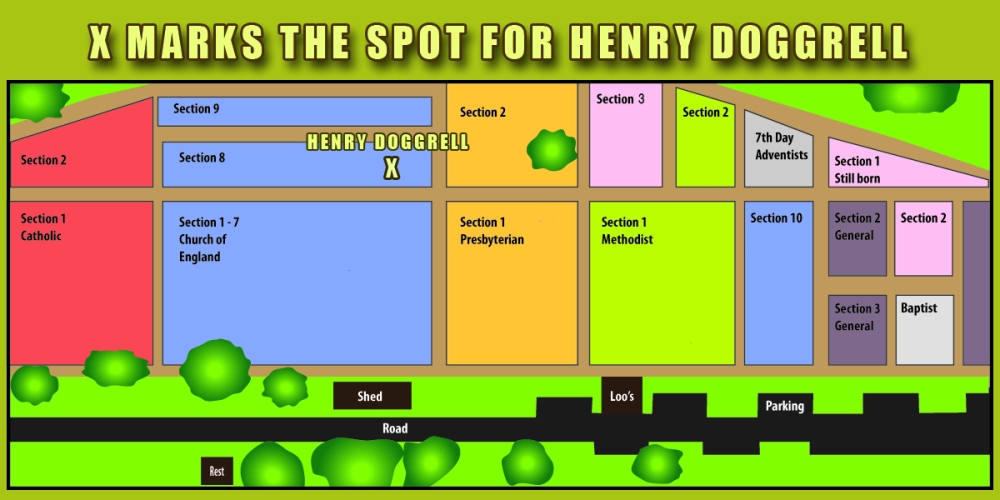











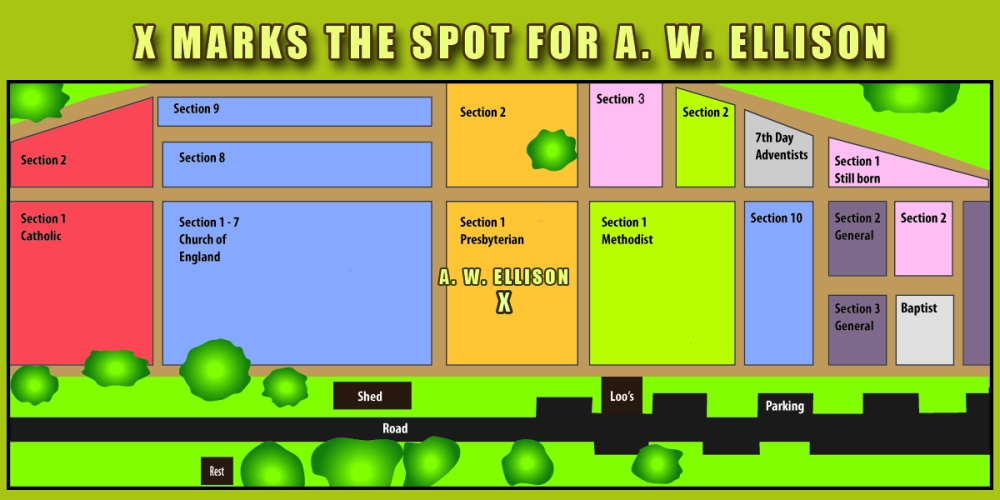




















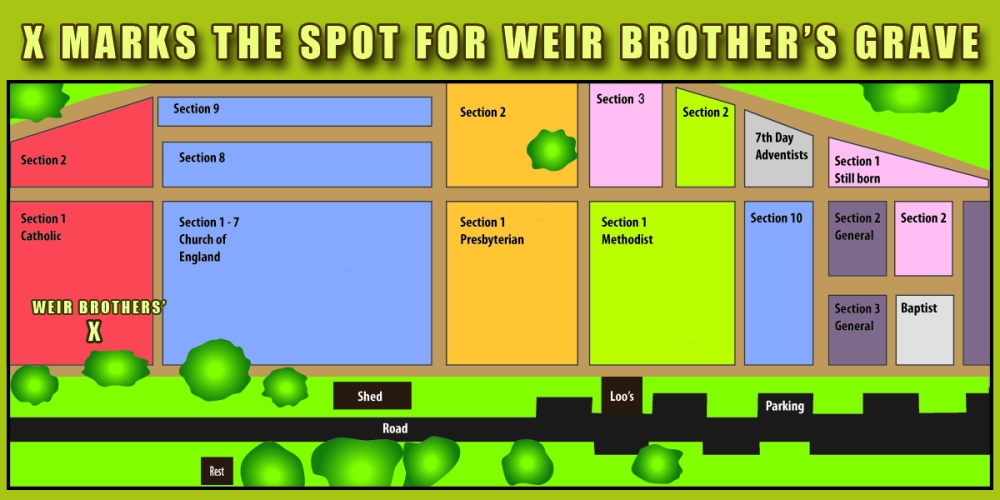







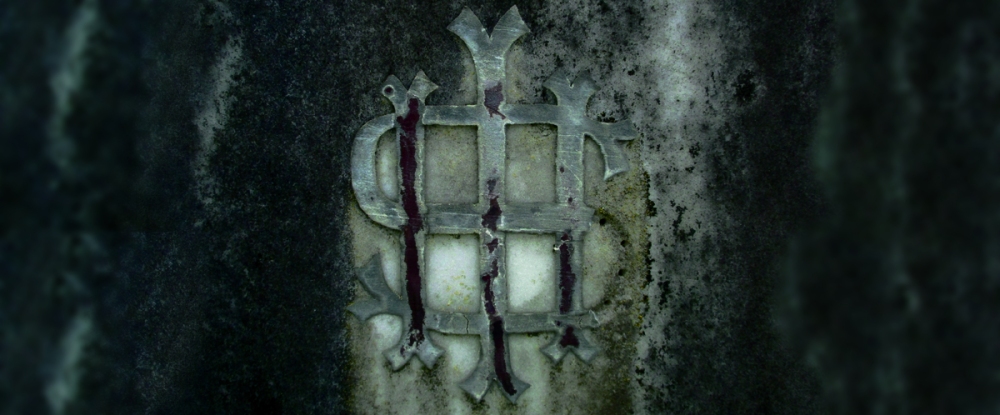









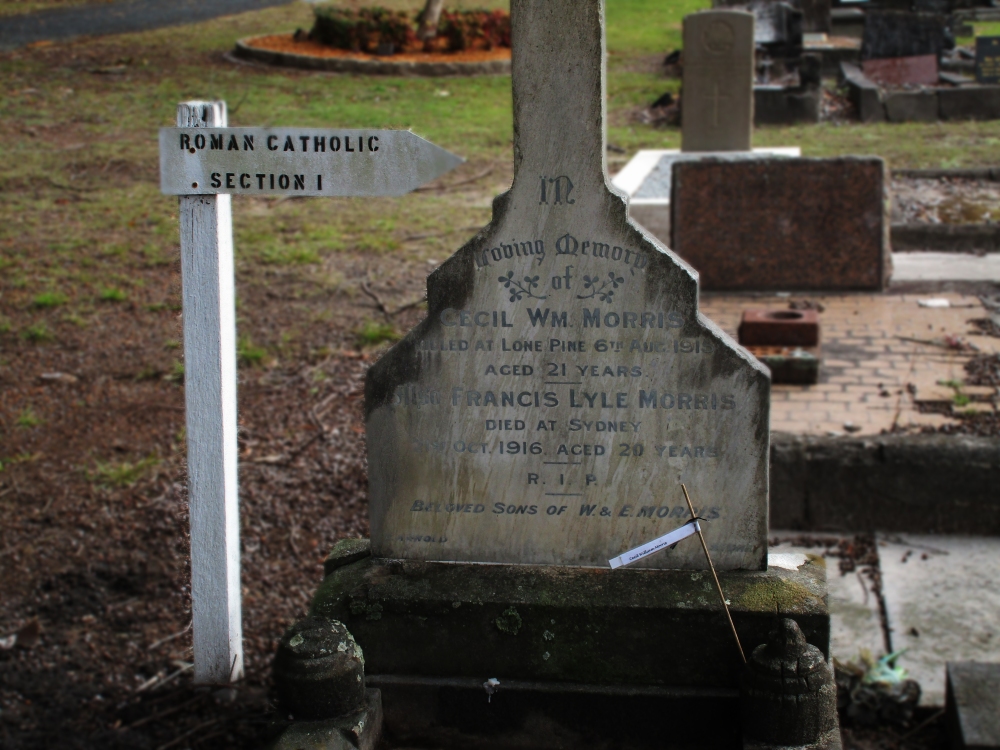 22nd January, 1915
22nd January, 1915
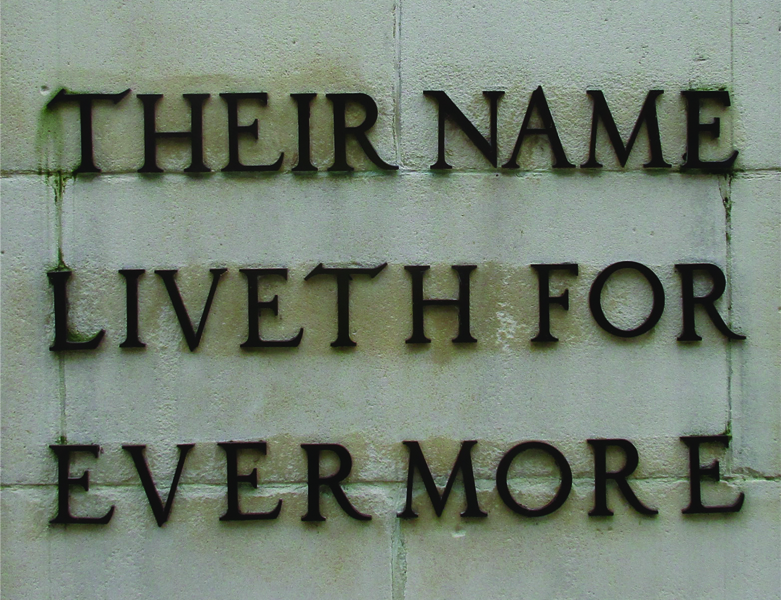 24th December 1915
24th December 1915

